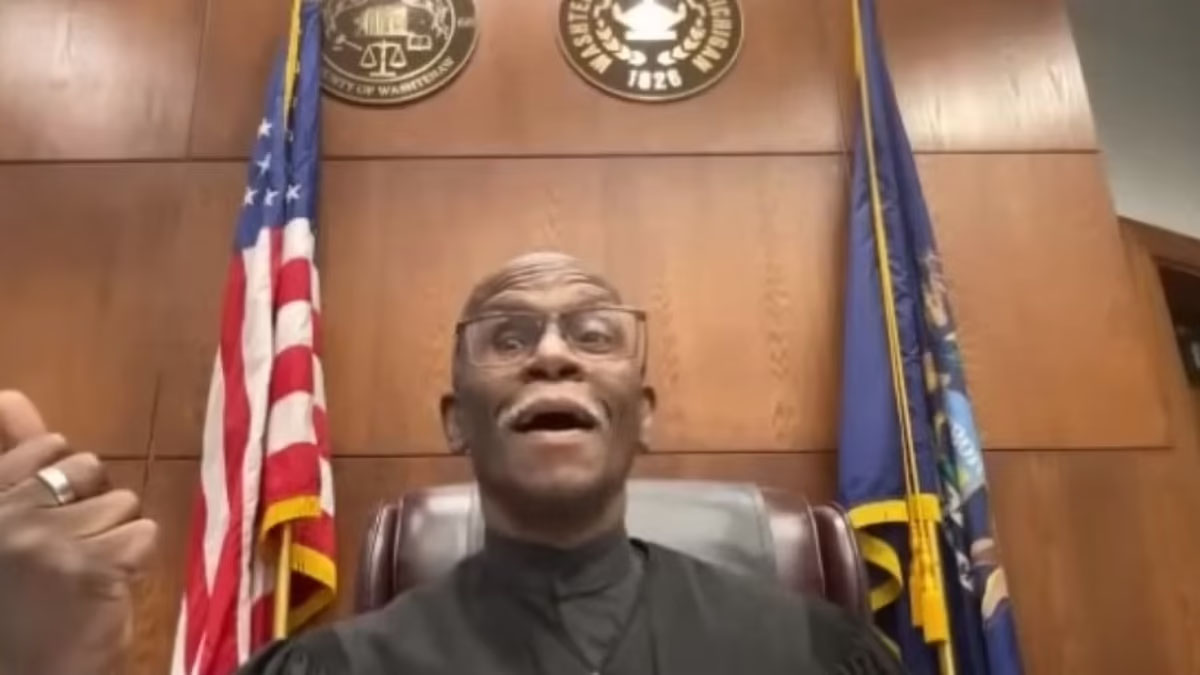 Photo Credit:Getty Images
Photo Credit:Getty Images
In an unusual and ironic turn of events, a man with a suspended license attended his court hearing via Zoom while driving a car. This incident,which occurred recently, has raised eyebrows and drawn attention to thechallenges of enforcing traffic laws and ensuring compliance in the digital age.
The man, whose identity has not been disclosed, was scheduled to appear in a virtual court hearing to address charges related to driving with asuspended license. With the advent of virtual court sessions due to the COVID-19 pandemic, many defendants have been able to attend hearingsfrom the comfort of their homes. However, this individual took the convenience of virtual attendance to an extreme, joining the hearing while actively driving.
During the Zoom session, the judge quickly noticed that the man appeared to be in a moving vehicle. Observing the background scenery and the defendant’s apparent engagement with driving, the judge questioned the man about his location and actions. It became evident that the defendant was indeed driving, prompting the judge to halt the proceedings momentarily.
Judge’s Reaction
The judge's reaction was one of disbelief and frustration. Emphasizing the gravity of the situation, the judge reminded the defendant of the reason for his suspended license and the inherent dangers of distracted driving. The judge expressed concern not only for the safety of the defendant but also for other road users, underscoring the irresponsibility of driving while attending a court hearing.
To address the immediate issue, the judge ordered the defendant to pull over to a safe location before continuing with the hearing. The proceedings resumed only after the defendant complied, and the judge issued a stern warning regarding his actions.
Legal and Safety Implications
This incident highlights several important issues related to traffic safety and legal compliance: Distracted Driving: Attending a court hearing while driving exemplifies a serious form of distracted driving. Distracted driving is a leading cause of accidents and fatalities on the road. By engaging in such behavior, the defendant not only violated traffic laws but also endangered lives.
Compliance with Court Orders: The defendant's decision to drive with a suspended license, compounded by attending a court hearing while drivingreflects a disregard for legal orders and the judicialprocess. This behavior can result in additional legal consequences, including fines, extended suspension periods, and even potential jail time.
Virtual Court Challenges: The transition to virtual court hearings, while necessary and beneficial in many ways, presents uniquechallenges.Ensuring that defendants adhere to court protocols and maintain appropriate decorum during virtual sessions is critical. This incident underscores the need for clear guidelines and strict enforcement to prevent similar occurrences.
Broader Implications
The broader implications of this incident touch on the evolving nature of legal proceedings in the digital age. As courts continue to utilize virtual platforms, there is a need to adapt and enforce protocols that uphold the integrity and seriousness of judicial processes. This includes educating defendants about acceptable behaviors during virtual hearings and implementing measures to verify compliance.
Furthermore, this case serves as a reminder of the ongoing issue of distracted driving. Public awareness campaigns, stricter enforcement of distracted driving laws, and technological solutions such as hands-free devices and driving mode settings on smartphones are critical in combating this pervasive problem.
The incident of a man with a suspended license joining a Zoom court hearing while driving is a stark illustration of the challenges faced by the judicial system and law enforcement in the digital era. It serves as a cautionary tale about the importance of adhering to traffic laws and court protocols, and the dangers of distracted driving. As virtual court sessions become more commonplace, it is imperative to establish and enforce guidelines that ensure the safety and compliance of all participants.

















